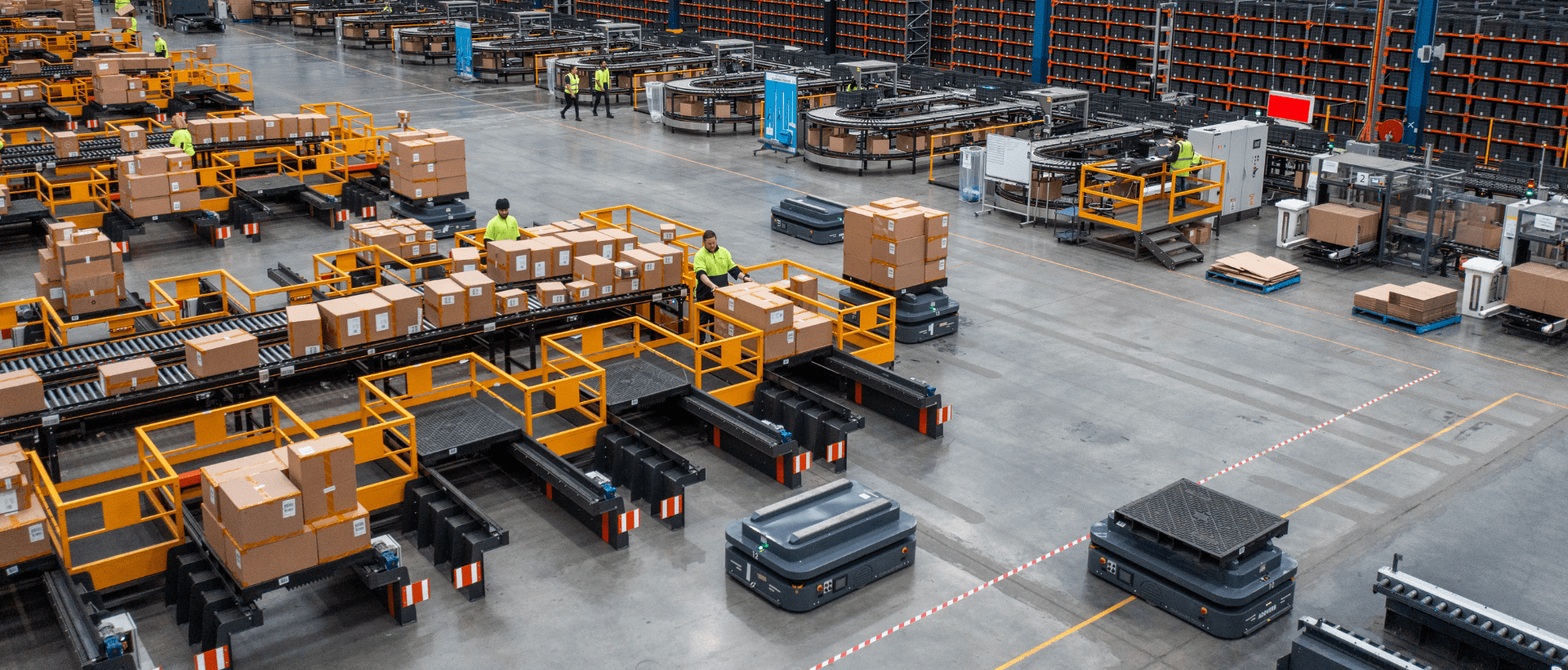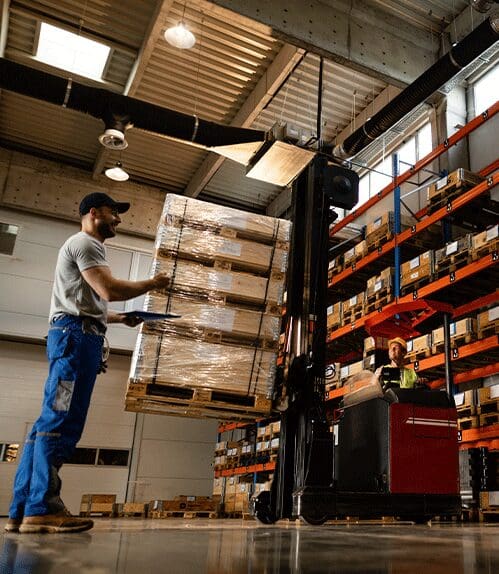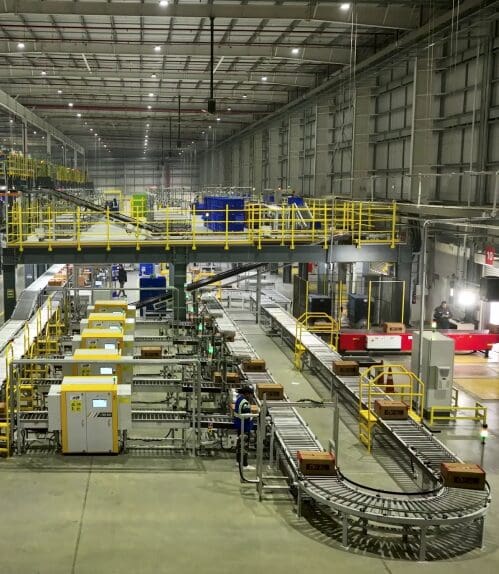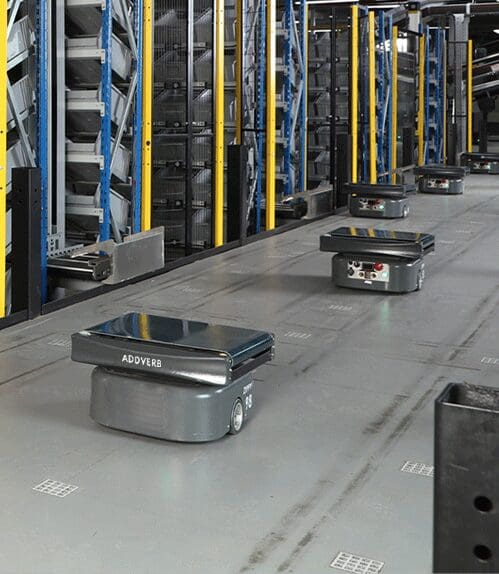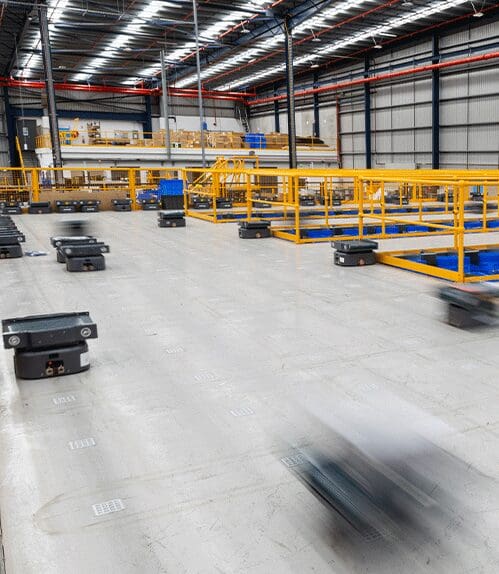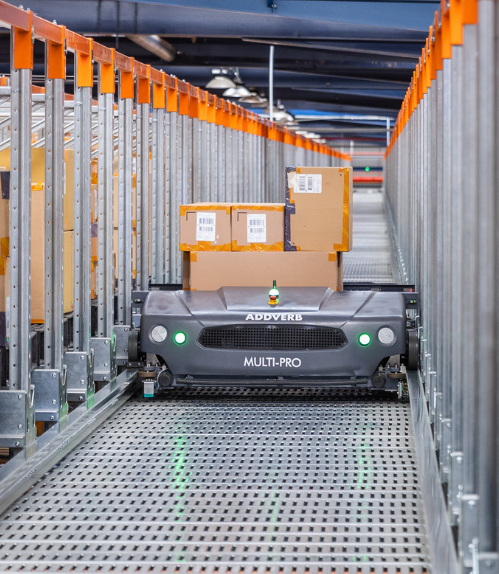Table of Contents
Let’s understand why fully automated warehouses are safe warehouses.
Safety Challenges of Traditional Warehouses
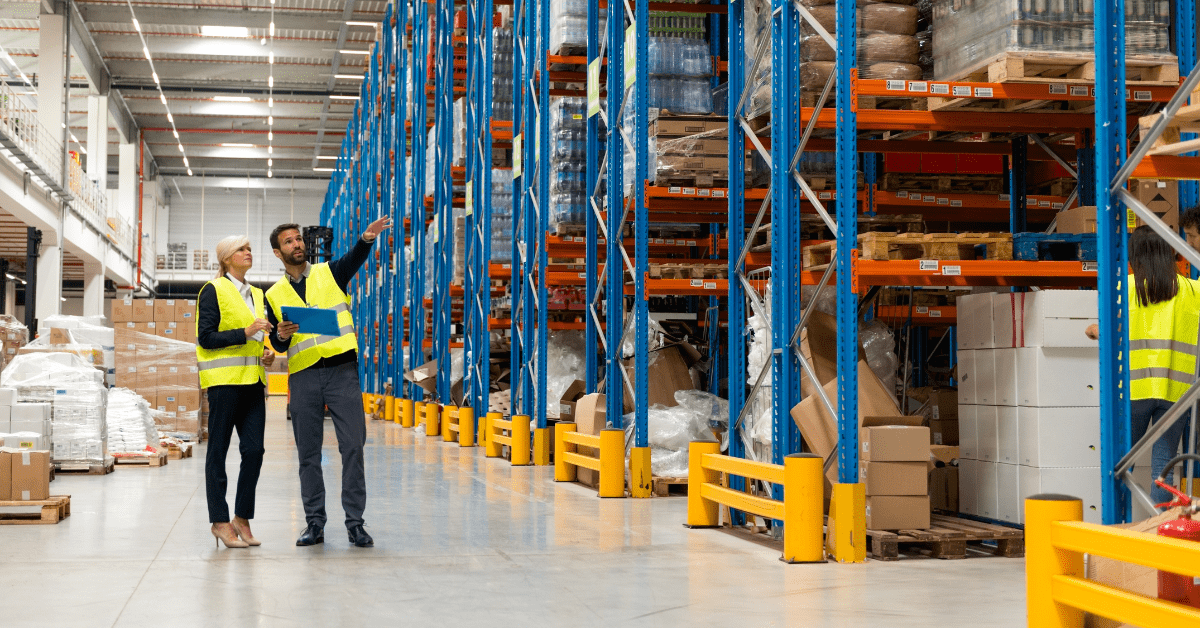
High-Risk Manual Labor
Manual labour in warehouses involves lifting heavy loads, repetitive motions, and operating machinery. These activities expose workers to significant risks, including musculoskeletal injuries, slips, trips, and falls. According to the Occupational Safety and Health Administration (OSHA), warehousing is one of the industries with the highest injury rates, with manual handling being a major contributor.
Forklift-Related Hazards
Forklifts are indispensable in traditional warehouses but pose significant safety risks. Statistics show that forklift accidents account for a large percentage of warehouse injuries and fatalities each year. Common incidents include collisions with workers, tipping over, and mishandling loads.
Human Error and Fatigue
The fast-paced environment of a warehouse, coupled with long shifts and repetitive tasks, can lead to human error. Fatigue, stress, and distractions further increase the likelihood of mistakes that can result in accidents, product damage, or operational delays.
How Automation Mitigates These Risks
Discover how Addverb revolutionized omnichannel fulfillment for a 3PL player, optimizing space and prioritizing order flow for seamless B2B and B2C operations.
Minimizing Human Involvement in Dangerous Tasks
Automated solutions such as Automated Storage and Retrieval Systems (ASRS) and Autonomous Mobile Robots (AMRs) significantly reduce the need for human workers to engage in hazardous activities. ASRS can handle the storage and retrieval of goods in high racks, eliminating the risks associated with working at height. AMRs can transport materials across the warehouse floor, reducing the need for forklifts and mitigating the risk of collisions.
Enhanced Precision and Operational Consistency
One of the standout features of automated systems is their ability to perform tasks with unparalleled precision. Unlike humans, machines do not suffer from fatigue, distraction, or stress. This consistency not only improves productivity but also enhances safety by ensuring that processes are carried out exactly as intended, reducing the likelihood of accidents caused by human error.
Ergonomic Improvements
Traditional warehouse roles often involve repetitive motions and physically taxing tasks, leading to long-term health issues such as chronic back pain and repetitive strain injuries. Automation alleviates these concerns by taking over the physically demanding tasks, allowing human workers to focus on less strenuous and more intellectually engaging activities.
Integrated Safety Technologies
Modern automated systems come equipped with a range of advanced safety features designed to prevent accidents. These include:
- Collision Detection: Sensors and cameras on AMRs and other automated equipment detect obstacles in real time, ensuring that the machinery can stop or reroute to avoid collisions.
- Emergency Stop Functions: Automated systems are equipped with fail-safes that can halt operations instantly if a potential hazard is detected, preventing accidents before they occur.
- Intelligent Routing: AMRs use advanced algorithms to calculate the safest and most efficient routes within the warehouse, minimizing the risk of accidents in high-traffic areas and overall making a safe warehouse environment.
- Example of a safe warehouse practice: A major retailer implemented AMRs with advanced collision detection in their warehouse, resulting in a 40% reduction in workplace accidents within the first year.
Data-Driven Safety Management
Automation doesn’t just improve safety on the warehouse floor; it also enhances safety management through data analytics. Automated systems generate vast amounts of data on warehouse operations, which can be analyzed to identify potential safety risks, track incident patterns, and optimize processes.
- Predictive Maintenance: Automated systems monitor their own health and performance, alerting managers to potential issues before they lead to breakdowns or accidents.
- Incident Analysis: Detailed reports generated by automated systems help safety managers understand the root causes of incidents and implement targeted interventions to prevent recurrence.
- Insight: A logistics company utilized data analytics from their automated systems to reduce equipment malfunctions by 50%, directly correlating with a decrease in operator injuries.
Improved inventory management
Inventory management may be made better with the aid of automated technologies, and this can increase safety. Automated systems, for instance, can monitor inventory levels and notify staff when supply levels are getting low. By doing this, you can help avoid incidents like boxes sliding off of shelves or workers attempting to lift heavy loads that are brought on by overstocking or understocking.
READ MORE: Drawbacks of Traditional Warehouse Picking Equipment
Building a Safe Warehouse Culture with Automation
Training and Upskilling
As automation takes over manual tasks, companies can focus on upskilling their workforce. Employees are trained to manage, maintain, and optimize automated systems, which not only enhances their safety but also empowers them to contribute more strategically to the organization’s success.
Addverb delivers software solutions to optimize safe warehouse management and automation
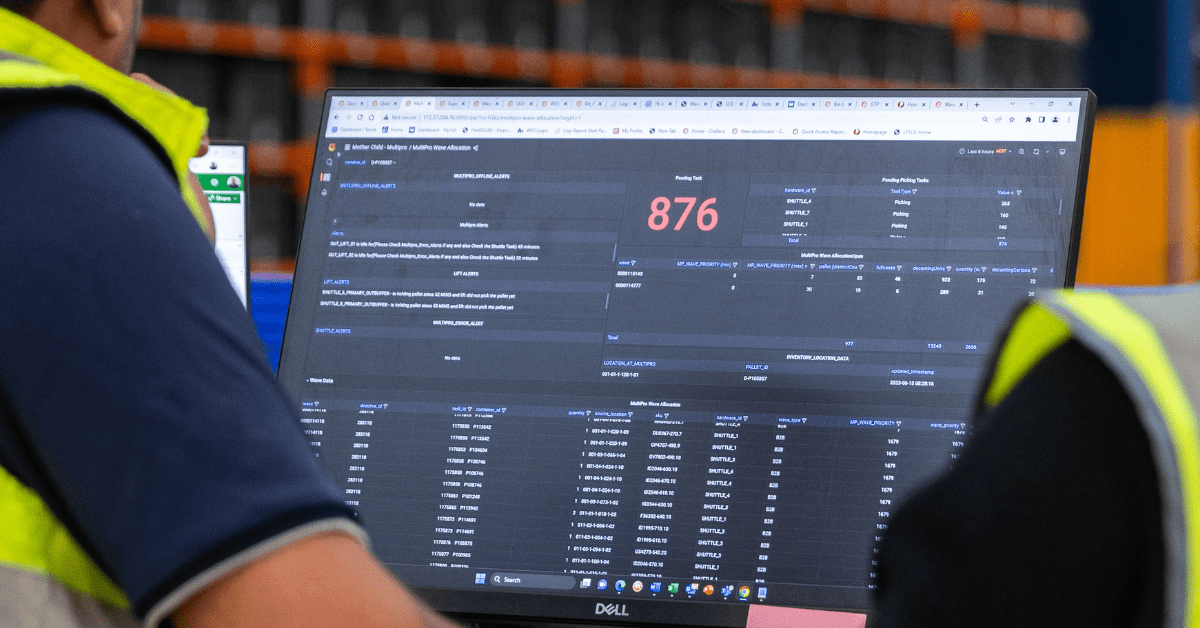
Optimus Warehouse Management System (WMS)
Optimus manages every warehouse operation from product entry to dispatch. It provides real-time visibility and advanced analytics to support data-driven decision-making. By automating inspections and material handling tasks—such as receiving, picking, storing, and dispatching—Optimus ensures product quality and operational efficiency. With a modular and adaptable architecture, Optimus is compatible with both Windows and Android platforms and can be hosted on any cloud system. It uses a rules-based engine that considers SKU specifics, productivity levels, and storage capacity to streamline safe warehouse operations.
Mobinity Warehouse Control System (WCS)
Mobinity serves as a unified interface for managing and monitoring all automation and Material Handling Equipment (MHE) within a warehouse. It ensures maximum utilization through dynamic load balancing, effectively managing inventory flow across various automation subsystems. Mobinity integrates seamlessly with third-party systems, including ERP, WMS, and others. The system’s intelligence identifies the most efficient product flow and directs equipment controllers accordingly. As e-commerce grows and new automation systems are installed, Mobinity’s modular architecture allows for easy expansion and the addition of new features.
Concinity Warehouse Execution System (WES)
Concinity facilitates end-to-end warehouse management, including inbound and outbound logistics, inventory control, resource management, workload balancing, and real-time decision-making. Acting as the operational backbone, Concinity coordinates and balances all warehouse activities, ensuring smooth and efficient operations.
Fleet Management System(FMS)
Movect provides a robust solution for the centralised management of multiple robot fleets. It ensures effective coordination, precise control, and efficient scheduling of robot operations. Leveraging complex algorithms, Movect optimises the allocation of tasks to robots, maximising overall throughput and productivity. By intelligently matching robots with tasks, it enhances operational efficiency.
Conclusion
In an era where efficiency and safety are paramount, automation stands out as a key enabler of both. Automated/ safe warehouses not only streamline operations and improve productivity but also provide a safer working environment by eliminating the hazards associated with traditional warehousing. Automation is transforming the warehouse industry into a safer and more sustainable sector by reducing the need for human involvement in dangerous tasks, enhancing precision, and leveraging data for proactive safety management.
As companies continue to adopt automated solutions, the future of safe warehouses looks brighter than ever. The question is no longer whether automation makes warehouses safer—it’s how soon you can start reaping the safety benefits of automation in your own operations. Embrace automation today, and pave the way for a safer, smarter, and more efficient future.
An automated warehouse is a safe warehouse?
Automated systems reduce human error, improve working conditions, and incorporate safety features that help prevent accidents.
How do automated systems enhance safety?
They provide real-time monitoring and analytics, allowing for proactive measures to avoid incidents and ensuring safe operation of equipment.
Can automation eliminate accidents?
While automation significantly reduces risks, no system is entirely foolproof. However, automation minimizes the chances of accidents and improves overall safety.
What safety features are included in automated warehouses?
Features include advanced sensors, emergency stop mechanisms, real-time alerts, and obstacle avoidance technology to ensure a safe warehouse environment.
Is automation only about safety?
No, while safety is a key benefit, automation also boosts efficiency, accuracy, and productivity in warehouse operations.
How does automation impact worker safety?
Automation reduces the need for manual, repetitive, and potentially hazardous tasks, protecting workers from injury and strain.
Are automated warehouses more efficient?
Yes, they optimize processes like material handling, storage, and retrieval, leading to faster, more accurate operations.
Should all warehouses automate?
Automation is ideal for many operations, especially those seeking to improve safety, efficiency, and scalability. However, the decision depends on specific business needs.
Founded in 2016, Addverb offers complete robotics solutions for warehouse and industrial automation, with a strong global presence through its subsidiaries worldwide. The company provides a range of in-house automation products, including Autonomous Mobile Robots, ASRS, and sorting technologies. It serves over 350+ clients, including well-known companies such as Coca-Cola, Amazon, and DHL.
